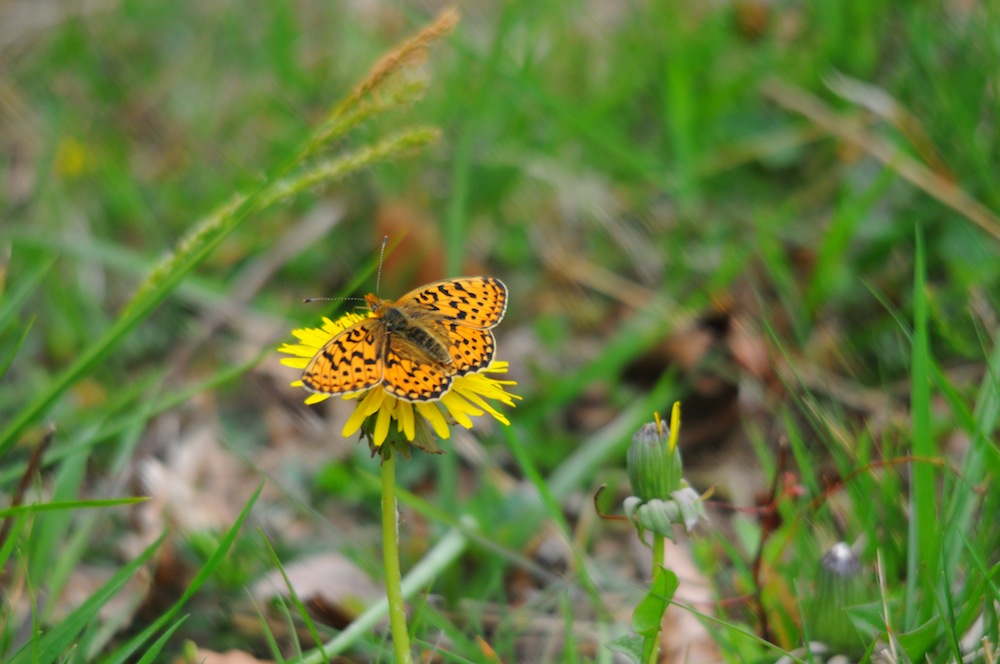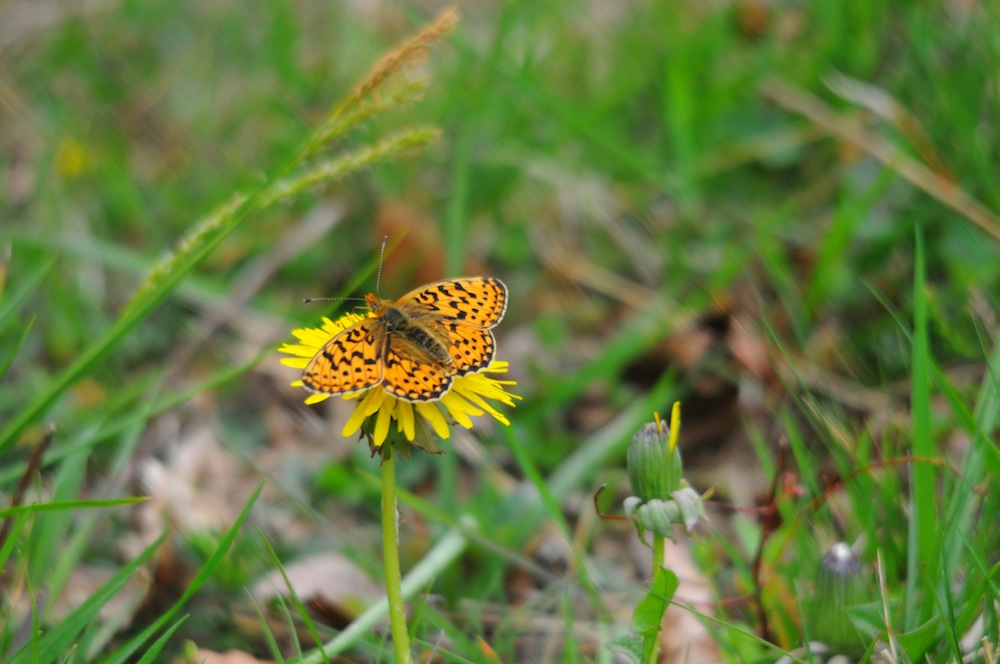A local naturalist has been helping to make woodland on the Worcestershire border a better place for rare butterflies. Wildlife expert Ed Andrews reports on how these delightful insects need more help than ever.
Nature lover Roger Littleover of Bridgnorth has been helping with winter volunteer work parties in the sprawling greenery of the Wyre Forest to clear scrub, bringing in light so that the plants upon which the butterflies depend can thrive. He returned with other volunteers in the spring and managed to photograph the beautiful pearl-bordered fritillary.
As Roger explains, “So much has been written lately regarding the declining numbers of our butterflies, but many reports have neglected to mention that in Shropshire, areas of conservation such as the Elan Valley pipeline and Prees Heath, near Whitchurch, good numbers of pearl-bordered fritillary and silver-studded blue have been recorded. The small pearl-bordered fritillary did particularly well as a result of conservation in these areas – and we have the blue to look forward to again in July.”
The pearl-bordered fritillary takes its name from the border of tiny ‘pearls’ that runs along its smaller wing, while the silver-studded blue is an iridescent-looking butterfly that almost glows when the sunlight falls upon it. The blue is particularly rare in central and northern England, Scotland and Ireland, and the Prees Heath site is thought to be the only home to a colony in the whole of these regions.
Rogers adds, “Without the commitment of conservationists who give their time and energy year after year maintaining the habitat of our butterflies and moths, they will eventually become extinct in our country just as the large copper, and black-veined white have; while the little chequered skipper now only survives across the border in Scotland. Butterfly Conservation plans to reintroduce the skipper to England are now in progress.”
From 15 July to 7 August, the charity Butterfly Conservation organise the Big Butterfly Count and encourage people to count the butterflies in their garden or local park. This is an important way of monitoring the populations of these wonderful insects, many of which have declined. More information can be found at bigbutterflycount.org.
As Roger concludes, “There is an old proverb: We do not inherit the earth from our ancestors; we borrow it from our children. There is so much we can do in our own gardens to attract insects. I enjoy photographing butterflies and would like to think my grandchildren will be able to see the real thing and not just my photographs…”
If you’d like to try attracting more butterflies to your garden, you can find advice on how to do so at butterfly-conservation.org, rhs.org.uk or bbc.co.uk/gardening.







